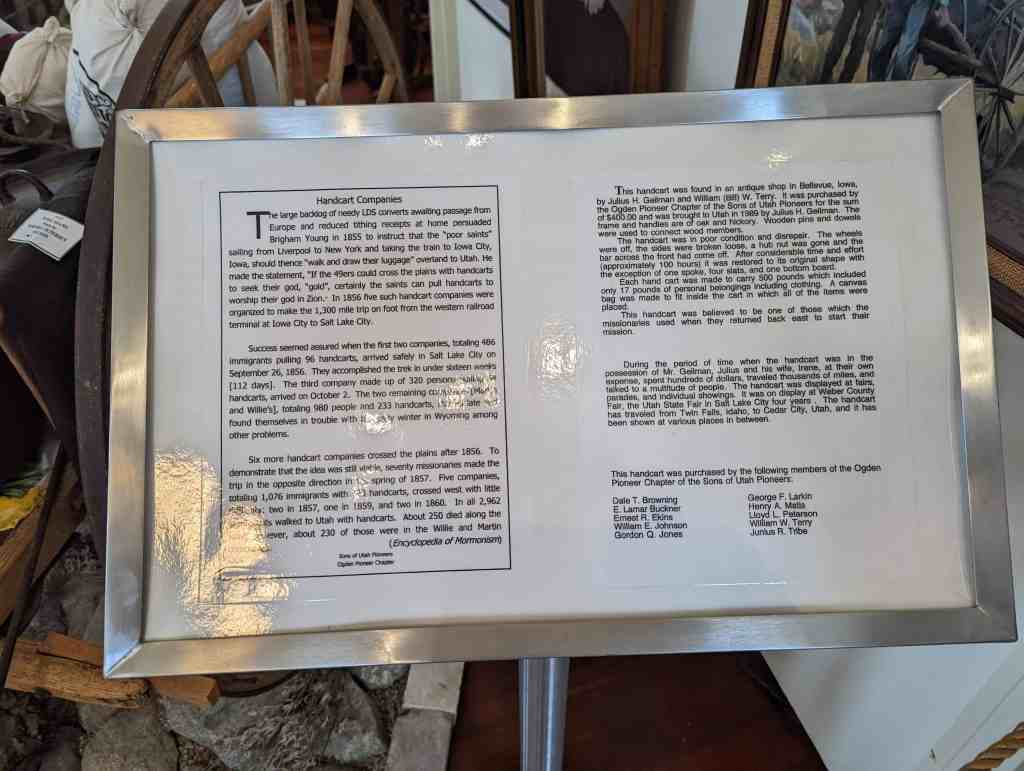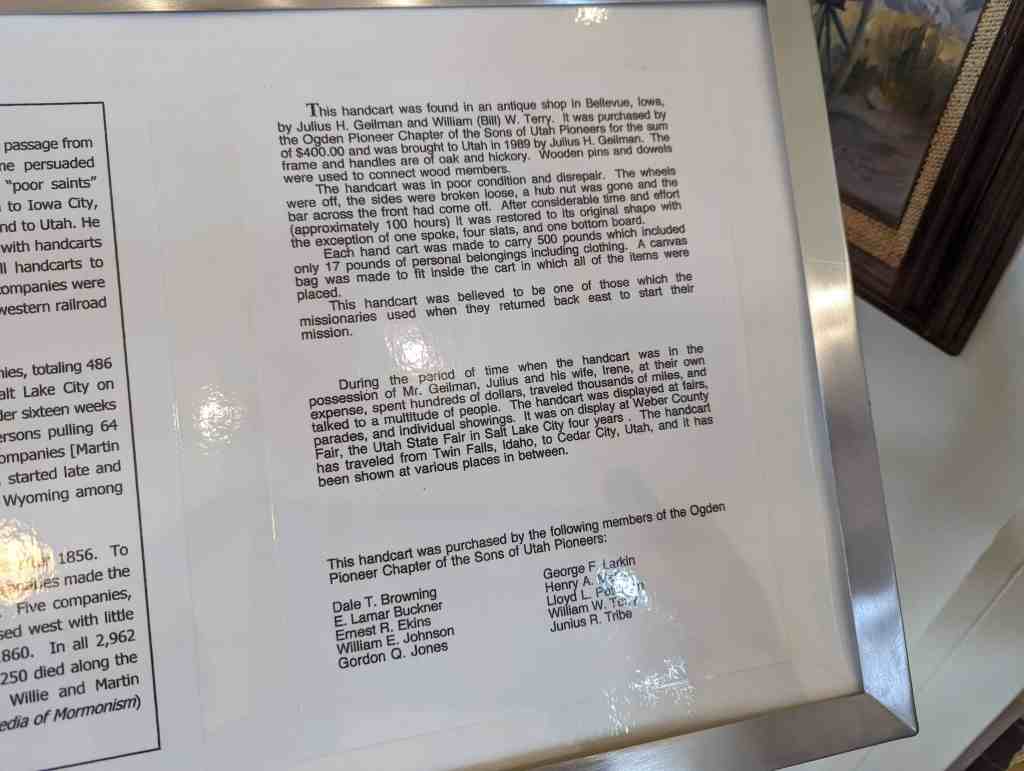Tags

Pioneer Handcart
This handcart was found in an antique shop in Bellevue, lowa, by Julius H. Geilman and William (Bill) W. Terry. It was purchased by the Ogden Pioneer Chapter of the Sons of Utah Pioneers for the sum of $400.00 and was brought to Utah in 1989 by Julius H. Geilman. The frame and handles are of oak and hickory. Wooden pins and dowels were used to connect wood members.
The handcart was in poor condition and disrepair. The wheels were off, the sides were broken loose, a hub nut was gone and the bar across the front had come off. After considerable time and effort (approximately 100 hours) it was restored to its original shape with the exception of one spoke, four slats, and one bottom board.
Each hand cart was made to carry 500 pounds which included only 17 pounds of personal belongings including clothing. A canvas bag was made to fit inside the cart in which all of the items were placed.
This handcart was believed to be one of those which the missionaries used when they returned back east to start their mission.
During the period of time when the handcart was in the possession of Mr. Geilman, Julius and his wife, Irene, at their own expense, spent hundreds of dollars, traveled thousands of miles, and talked to a multitude of people. The handcart was displayed at fairs, parades, and individual showings. It was on display at Weber County Fair, the Utah State Fair in Salt Lake City four years. The handcart has traveled from Twin Falls, Idaho, to Cedar City, Utah, and it has been shown at various places in between.
This handcart was purchased by the following members of the Ogden Pioneer Chapter of the Sons of Utah Pioneers:
Dale T. Browning, E. Lamar Buckner, Ernest R. Ekins, William E. Johnson, Gordon Q. Jones, George F. Larki, n Henry A. Matis, Lloyd L. Peterson, William W. Terry, Junius R. Tribe.
This is Sons of Utah Pioneers historic marker #210, located at the Weber County Daughters of Utah Pioneers Museum at 2104 Lincoln Avenue in Ogden, Utah



Handcart Companies
The large backlog of needy LDS converts awaiting passage from Europe and reduced tithing receipts at home persuaded Brigham Young in 1855 to instruct that the “poor saints” sailing from Liverpool to New York and taking the train to Iowa City, Iowa, should thence “walk and draw their luggage” overland to Utah. He made the statement, “If the 49ers could cross the plains with handcarts to seek their god, “gold”, certainly the saints can pull handcarts to worship their god in Zion.” In 1856 five such handcart companies were organized to make the 1,300 mile trip on foot from the western railroad terminal at Iowa City to Salt Lake City.
Success seemed assured when the first two companies, totaling 486 immigrants pulling 96 handcarts, arrived safely in Salt Lake City on September 26, 1856. They accomplished the trek in under sixteen weeks [112 days]. The third company made up of 320 persons pulling 64 handcarts, arrived on October 2. The two remaining companies [Martin and Willie’s], totaling 980 people and 233 handcarts, started late and found themselves in trouble with the early winter in Wyoming among other problems.
Six more handcart companies crossed the plains after 1856. To demonstrate that the idea was still viable, seventy missionaries made the trip in the opposite direction in spring of 1857. Five companies, totaling 1,076 immigrants with 223 handcarts, crossed west with little difficulty: two in 1857, one in 1859, and two in 1860. In all 2,962 immigrants walked to Utah with handcarts. About 250 died along the way, about 230 of those were in the Willie and Martin companies.










